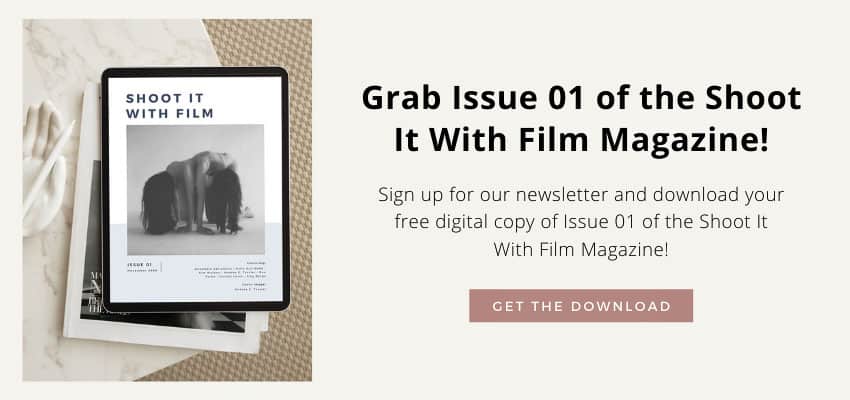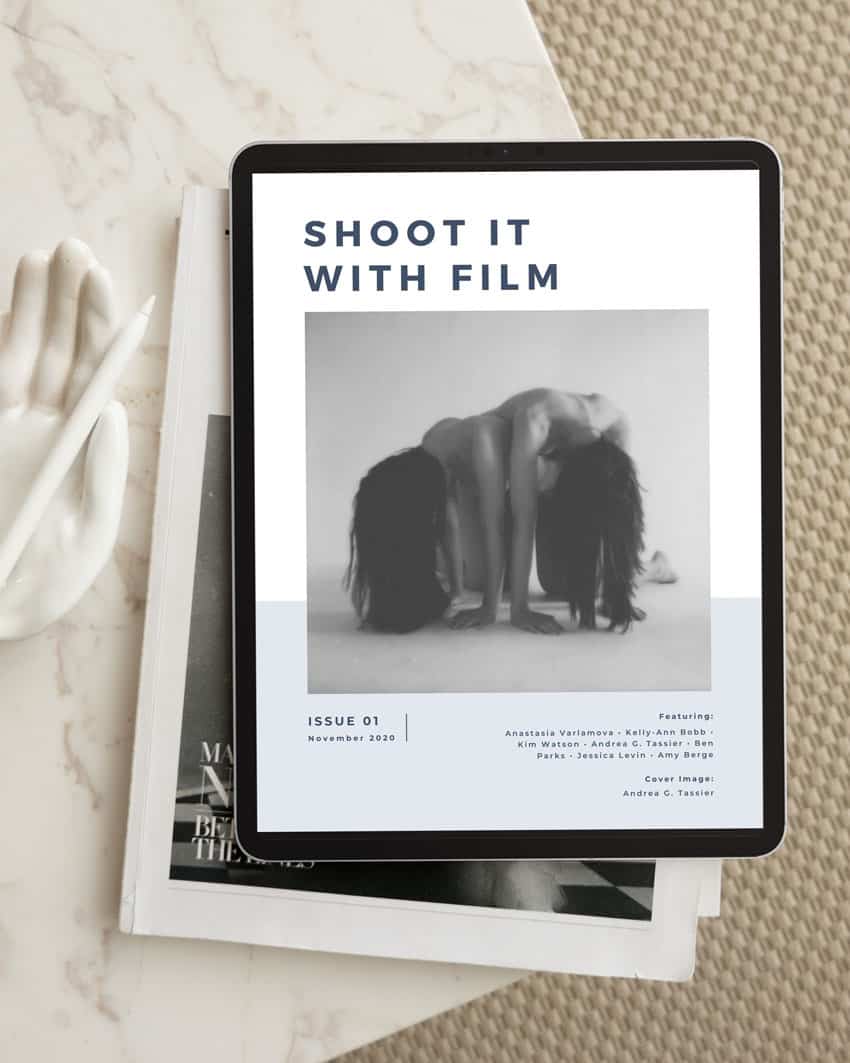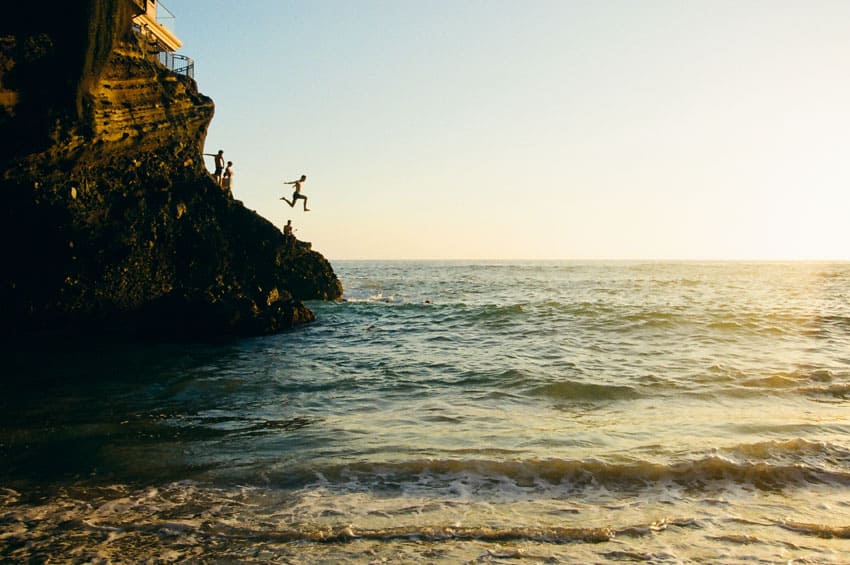
Written by David Rose
In film photography, like with most things in life, your perspective matters.
Perspective and composition is to photography what poetry or prose is to language – they can define the difference between a technically “correct” image (or sentence) and one that draws you in, invites you to stay, and captivates you for a moment that seemingly lasts forever.
Your eyes are binoculars, meaning that everything you see is already presented to your brain in three dimensions.
The challenge with photography, or any visual art for that matter, is that you are trying to capture the essence or feeling of this 3rd dimension (depth) on a two dimensional plane, which can be a harder task than it seems.




The Basic Concepts of Perspective and Composition
First, a glossary of some basic concepts for perspective and composition:
Horizon Line:
The horizon line is the line where earth meets sky on a flat plane (i.e. looking out at the ocean). The horizon line will always be at eye-level to the viewer.
In photography, it’s almost always a good idea to make sure that your horizon lines are as straight as you can make them.

Vanishing Point:
The vanishing point is the point where parallel lines receding into the distance appear to converge.


Linear, 2-Point, and 3-Point Perspective:
Linear perspective is where all parallel lines that are perpendicular to the viewer converge at a single vanishing point. All vertical lines are parallel to each other. Think of viewing a box straight on from the side.
A 2-point perspective has two vanishing points on each side of the field of view. Now, we are viewing the box more from the corner.
Throw in a third vanishing point out of frame to either the top or bottom of the field of view and this is 3-point perspective.
This additional vanishing point is known as the zenith (if above) and nadir (if below), and helps define the spatial and relational elements within the picture. Bird’s eye view looks downwards from a high up perspective, while worm’s eye view looks upwards from the ground.

Visual Balance:
The aesthetic balance or visual weight of different elements within an image. If you’ve seen a yin yang symbol then you know what this looks/feels like.
Depth-of-Field:
Depth-of-field is the distance between the nearest and farthest subjects in the frame that are judged to be “in focus.” This can be called ‘shallow’ or ‘deep’ which we will get into later on in this article.


Rule of Thirds:
Divide your image evenly into thirds (horizontally and vertically) and place your subject(s) on these lines, particularly where they intersect… more of a general guideline than an actual rule.
Here’s an example of using the Rule of Thirds where the subject is at the intersection of the image divided into thirds both horizontally and vertically. (Also notice the straight horizon line.)

Standard disclaimer: This guide is not exhaustive but just contains some helpful ideas that I use when capturing my shots… With that out of the way, let’s begin!

Tips for Establishing Better Perspective and Composition in Your Images
Here are some tips for how you can use perspective and composition to take more interesting photos.
Not all of these apply specifically to film, some are relevant to photography in general, but there are certain advantages and nuances for how they might impact things in the world of film photography.

Leading Lines
Choosing the right perspective can help you find leading lines within a scene.
Simply put, leading lines are anything within the frame that “lead” the eye into and around the shot. These can be helpful in directing the attention and gaze of the viewer.
While leading lines can really be made up of anything, here are some of the most common everyday features of our world that make for great leading lines:
Train Tracks
Though overshot to the point of being a cliché, train tracks make for great leading lines.
In the example below, the train tracks function as leading lines that draw the eye from the bottom left into the middle of the shot where the woman is standing.

Roads
Roads are another great source for leading lines, particularly in the realm of landscape photography.
While not a natural element, they are an easily recognizable feature in our world that also help to convey a sense of scale.
Here, the leading line starts where the road appears in the upper middle section of the image, and pulls the eye along the curves down and around where it exits on the left side of the frame.

Rivers
Some of the best leading lines found in nature are rivers.
Not only are they immediately attention-grabbing, the way they meander through a scene provides a calming path for your eyes to walk along.
Here, the leading line starts in the bottom right of the image and winds its way back and forth to the mountains in the distance.

Composing for Depth
Arrange elements within your shot to create interesting results and the illusion of depth.
In this image, it took some maneuvering, but the end result of the roof of the lighthouse matching the horizon line of the water slices the image into different colorful themes and is soothing to the eye.

Medium Format Subject Isolation
A huge benefit of shooting on medium format film is that it’s a shortcut to greatness… and by greatness I mean the 3D pop effect that is quintessential of medium format film photography.
Subject isolation with medium format is what happens when you combine a wider field of view with a shallow depth-of-field, and is something that is made possible thanks to the larger lenses, image circle, and film size of medium format film cameras.
This type of effect is not wholly achievable with smaller/digital cameras without taking a slew of pictures and stitching them together later in post, a technique sometimes called a bokeh panorama or the “Brenizer method.”
This photo uses both leading lines (the road swooshing into the distance) along with the shallow DoF/subject isolation of medium format to create multiple visual interests within the frame.

Below an example of the Brenizer method on digital made from stitching together about 50 individual photos.

Related: 35mm vs 120: Choosing a Film Format
Experiment and Try Different Perspectives
Many an uninteresting photo has been taken of an interesting subject, and the reason for this is that most people will see something they want to take a picture of, and just take the picture without a second thought.
Instead of just going with your first idea, try exploring around a scene to find an interesting angle or composition that pops out at you.
Visualization of your final shot before clicking the shutter is an often missed step, and according to Ansel Adams, “[it] is the single most important factor in photography.”
Without visualization, photography becomes accidental and merely opportunistic, but if you really consider the end result, it will help you to become more patient and deliberate, both of which are essential attributes for film photography.
As an example, it paid to be observant and patient for this image – while walking around my school campus I noticed this welder working high up on a new building, and after walking around and deciding on the composition I wanted, I then waited for the brief moment when he took a breather to snap a picture.

I’m always happy to answer questions if you reach out to me via DM on Instagram. Hope you found this guide helpful!
Thank you so much, David! David is a regular contributor here at Shoot It With Film, and you can check out his other articles here, such as his Guide to Choosing a Color Film and Ilford Black and White Film Guide.
You can also find more of David’s work on Instagram!
Leave your questions about using perspective in film photography below in the comments!








Leave a Comment